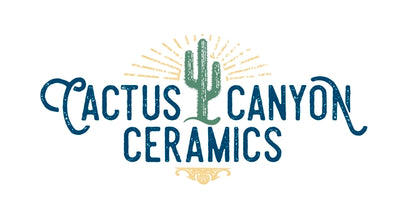This is a real problem. There is a large population of artisans in Spain that produce beautiful, top quality ceramics. There are no regulations in the Spain that require a product to carry a label on where it is made. For example, in the U.S., you can pick up a piece of tableware, turn it over and it will carry a label or stamp saying “Made in China”. Not so in Spain, and this is a huge danger to the future of artisan production in Spain. You can imagine the backlash of “American Made” factories, if merchants did not have to put “Made in China” on products. Most people are inclined to purchase the cheapest item available, even if clearly sacrificing quality. Cheap wins hands down most times. If US merchants did not have to declare where items were made, it would kill most local manufacturing in the States.


The photos above showsJesus Gonfer throwing a bowl on the potting wheel and also a pitcher that he produces in the 100s. Jesus lives in El Puente del Arzobispo and he produces the pitchers and bowls that are given as gifts for patrons to the “oldest restaurant in the world” – Restaurante Botín in Madrid, which is especially famous for their roast suckling pig.
Chinese Ceramics in Seville Gift Stores
I am very familiar with the pottery landscape in Spain and I know which factories sell the Chinese ceramics in Andalusia. Once in a while I pass through gift stores in Seville or the surrounding pueblos/cities. I always make a practice of picking up the pieces that are made in China, and I say “Estos son hecho en China” (these are made in China). Four out of 5 times, the shop keeper will adamantly tell me that “NO, … the pottery is made and hand painted in Spain”. Most really don’t know, and I get the idea that they don’t ask questions of their suppliers. Gift store merchants are all about margins (as most merchants are). They have tons of other Chinese made trinkets in their stores. If they can buy a very cheap piece of pottery, put a larger markup on it, that is what they will do of course. If the shop owner is told by the factory sales person that the pottery is “Spanish” (wink, wink), they don’t ask questions. Plausible deniability – the less they know the better. If it is cheap they can sell it at regular Spanish pottery prices and make even a larger margin.
Business is Business
Hey, I fully respect a product hand painted in China. I believe there is market place for all levels of quality and value. Let the customer decide. But, a typical customer in a gift shop in Spain needs to be informed. There is a vibrant artisan culture in Spain which is reflected in the plazas, restaurants and stores. Many times a tourist wants to take something authentic from Spain back to their home. I believe that a tourist should know if they are purchasing authentic Spanish pottery, or Chinese pottery made with Spanish designs. I think this is also really important for local artisans also. If more and more Spanish factories send their designs to China for mass production, it will annihilate the Spanish pottery economy. Third generation potters and painters will have to move to cities and … I don’t know … drive taxis? …clean buildings? …fish, ….pick olives? Already the unemployment rate in Spain is above 20%. The rate is higher for young people and underemployment and two or three part time jobs are the norm.
I think that the pottery should be labeled clearly if it is “Made in China”, just as it is in the States. The customer can then decide if they want to buy a $6 dollar Chinese bowl, or spend the extra $2 and get an authentic Spanish made bowl.
Full Disclosure
When I first arrived to Spain in 2010 and started visiting Spanish tile and pottery factories/workshops, I did not know the difference between Chinese produced pottery and Spanish made. I began working with one of the larger Andalusian factories as a US sales agent. I did not know that a portion of what they offered was made in China. As I clued in, I had several discussions with one of the owner/operators of the dangers involved with passing off Chinese stuff as made in Spain. The owners/operators of the factory never admitted out loud, that the stuff was made in China. If people were savvy enough to ask where pieces were produced, pat answers were given such as “we get other factories to produce this, some is made Portugal”. They stayed away from the whole concept of “China”. It was all hush, hush, wink, wink. I learned that even the annual trip to China to fine tune the designs in the Chinese factories was hush, hush, – almost top secret.
There is nothing wrong with getting things made in China. Heck, everybody does it and China is getting better and better at providing a range of quality, not just cheap crap. I enjoy listening to podcasts about selling online, creating brands and the challenges of e-commerce. Two of my favorites are EcommerceFuel (Andrew Youderian) and My Wife Quit Her Job (Steve Chou). Much of the discourse is about how to develop products and then source them in China. The US market place is stuffed full of Chinese products. It is a good thing. But,… again, the customer should always know where the product is made.
I no longer work with the Spanish factory that sells the Chinese knock-offs. I worked really hard for them for several years, but many problems arose with them which lead to hard lessons learned by this “Gringo living in Spain”. Thank God I moved on rapidly. I shook the dust from my heels and hit the road and will never look back.
I should clarify that both the factories that I know are selling Chinese knock offs, also have their own workshops where they have an outstanding teams of painters. So they also sell “Spanish made”, which creates a convenient smokescreen for the Chinese stuff. One factory sells beautiful pieces with unique designs and the other produces top notch “cuerda seca“, which is a technique for making brightly colored pottery with colored glazes. As an aside, the cuerda seca is a technique very specific to Seville. And I believe the early Spanish colonists in Mexico implemented this technique, which has since evolved into the very well know line of “Mexican Talavera“.
All Right Big Stuff, Put Up or Shut Up – What’s the Difference?
How do you tell Chinese stuff from the real deal? I recommend 4 methods for identifying knock off, Chinese made Spanish pottery.
1. Examine the Fired Markings, Seals or Signatures
Look for a fired in the kiln seal or mark on the bottom that says “Handmade in Spain”, “Hand painted in Spain” or a signature. Something that does not peel off or look like it was printed on with ink. Sometimes the Chinese distributing factories will place a clear plastic seal or label on the bottom of the piece with their factory name or even stamp their name on the piece with ink. These factories have not gotten to the point where they will stamp the Chinese products “Made in Spain”. That would be against the law. So they blow smoke and make it confusing but don’t actually say “Made in Spain”. By looking closely at the bottom of the piece, you should get a pretty good idea whether or not the piece is authentic.
2. Look for “Drip Marks” in the glaze application
Another way to identify authentic Spanish ceramics is to look for a drip mark or an uneven application on the bottom of the piece.



To date, the Chinese “Spanish pottery” has not had this tell tale sign. I believe the Chinese glaze their pieces with high pressure pistols or glaze application machines, similar to what is used for standard, machine made dishes made in China.
3. Examine the Weight and Shape
The Chinese stuff is much more uniform. If it looks like it was made by a machine, chances are it was. To date, the Chinese stuff has always been white clay (bisque), with very bright colors. Usually a shop will offer 4 or 5 designs, and if the pieces have exactly the same shape (I mean exactly) every time, then it is probably Chinese. I don’t know for sure, but I believe the Chinese stuff is mass, machine made because it is so uniform.
Spanish potters use machine presses and forms (in addition to hand throwing), and in every case, there will be “hands on” in Spain. The final touch, smoothing, scraping, reforming is done by hand. Not so with the Chinese pottery, it is all machine made.
Also, to date the Chinese stuff is lighter and chips easier than the traditional bisque of Andalusia. If one piece looks more authentic and you are not sure about another, pick them up. The Chinese pottery is usually lighter in weight (different clay).
If it look looks like it was made by a machine, it probably was. The Chinese do hand paint the designs, and there are differences in the painting usually regarding the weight of the “slip trailing” design, but that is a little more technical.
4. Ask the Shop Keeper
I have found Spaniards to be honest and helpful. Walk straight up to them and ask if the pottery you are interested in was made in China. They are always helpful regarding straight questions. If they huff and puff and don’t answer, weight their reaction and listen to what they say. If they don’t say “no it isn’t” straight up, then chances it is Chinese and they know it. Follow your gut and buy what you want.
Conclusion
There is nothing wrong with buying Chinese “Spanish pottery” if that is what you will be satisfied with. It is usually cheaper and the colors are beautiful, the same as the colors of authentic pieces. But you should be aware of what you are purchasing.
I think identifying Spanish pottery made in China with a “Made in China” sticker is important for the future of the Spanish potting communities in Spain, and for the health and continued confidence of customers looking for “Made in Spain”.

Thanks for reading. I welcome comments or questions. – Steve

